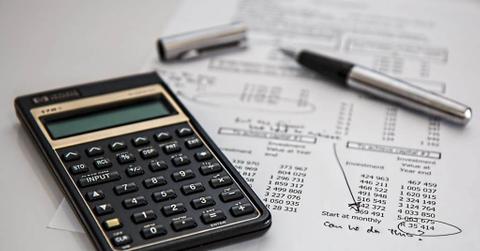How To Create A Budget In 5 Steps

The older you get, the more you realize just how important having a budget is. You can put off creating a budget for as long as possible, but there will come a point when you just need to face the facts and accept that you need to figure out your finances. Everybody’s budget is different, but for the most part, it will consist of money allocated for various personal and household purposes. It is smart to have an idea of how much money you should spend on necessities, how much money you should save, and how much money that leaves you leftover to spend.
Having a budget is an important part of keeping track of your life, but it is especially important if you have financial goals you are trying to achieve, such as buying a house or car. To get started, use our guide for how to create a budget in 5 steps:
1. Collect Your Paperwork
First, you need to collect your paperwork in order to manage your finances correctly. Collect all your financial statements, including bank statements, W2s, 1099s, and credit card bills. All this paperwork will help you determine your income and expenses which will make creating a budget much easier.
2. Calculate Your Monthly Expenses
It is best to create a budget on a monthly basis. Get started by calculating your monthly expenses. You can use a monthly budget template, that matches your lifestyle, to help you get started. After you have collected your paperwork and determined your income, calculate how much you spend each month on various things, such as groceries, utilities, transportation, etc. Use information from at least the past three months to give you a solid understanding of how much you spend.
3. Look At Fixed And Variable Expenses
Once you have calculated your monthly expenses, take a look at your fixed and variable expenses as those will give you a better idea of how much you spend every month. Your fixed expenses are things like rent, car payments, and student loans, that you always spend the exact same amount on each month. Variable expenses change each month and consist of things like food and drinks, clothing, and activities. There might be one month that you cook nearly every meal and don’t go out much, but the next month you might go on a vacation. These expenses will change on a monthly basis and it is important to be aware of that.
Taking a personal finance course may be a good idea to introduce to these key concepts.

4. Determine A Budgeting Framework
You have calculated your income and total monthly expenses, now you just need to determine a budgeting framework. Many people use the 50/30/20 rule for budgeting, which states that 50% of your budget should go to necessities like rent and utilities, 30% should go to wants like subscription services and entertainment, and 20% should go to savings and debt repayment. This is a common budgeting method many people use, but it differs for everyone. What is why it is important is to figure out a framework that allocates enough money to all of the payments you need to make, and leaves you with some leftover to save.
5. Continue To Track Your Expenses
Even though you may have calculated your perfect budget after all of this, you still have to continue to track your expenses. Things in life change and with that, your budget will as well. You may come across bigger expenses, such as saving up for a new house or wedding, and those need to be accounted for. Continue to keep track of your income and expenses on a weekly basis, if not daily basis, to ensure you are staying within your means.
Becoming a pro at budgeting might take time, but it is a necessity we must all learn how to do. Some people find they can pay off their bills easily, while others have to adopt other methods, such as a cash-only budget. Having a budget is an essential part of being an adult and learning how to take care of yourself. Be strict with your money spending habits and it will pay off in the long run.





